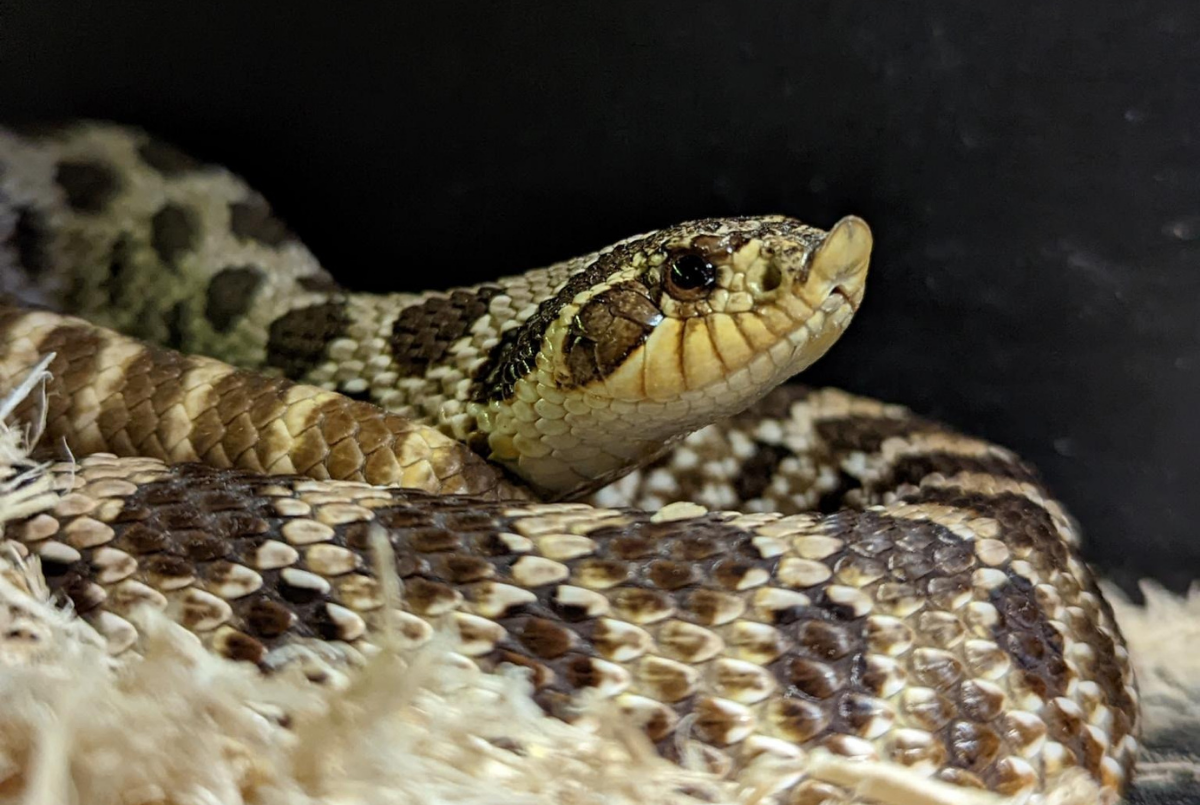Western Hognose Snake

Basic Information:
Scientific Name: Heterodon nasicus
Habitat: Western hognose snakes can be found from southern Canada, through the United States, and into northern Mexico.
Diet: Western hognose snakes live on a diet of toads, frogs, lizards, mice, birds, snakes and reptile eggs.
Size: 1 to 3 feet long
Weight: 0.1 to 0.8 pounds
Lifespan: 9 to 19 years in the wild. 15 to 20 years in human care.
Distribution Map?
I.U.C.N. Conservation Status:

What does this mean?
Least Concern – a species determined by the International Union for Conservation of Nature (I.U.C.N.) to be pervasive, abundant, and thriving.
Our Western Hognose Snakes:
Josie (Female) – Estimated Date of Birth Between August 2015
Apache (Male) – Estimated Date of Birth August 2015
About Western Hognose Snakes:
While hognose snakes are found across all of North America, the Western Hognose snake species can be found all across the western half of the continent. The name of this snake comes from the distinct up-turned scale on its nose. This scale can be used to forage for food as well as to dig burrows. Because of this, loose soil is a requirement in a hognose snake’s habitat. However, these snakes can be found in all sorts of different climates. Should they happen to find themselves in a colder area – such as South Dakota during the winter – they will brumate (or hibernate) for a few months until the weather warms up.
Did You Know?!
- Western hognose snakes use their upturned snout to burrow through the earth in search of toads: their principal food.
- Western hognose snakes have one of the most elaborate bluff behaviors in the snake world: they will flatten the skin on their neck to give themselves a hooded appearance, hiss, go into convulsion-like motions, turn over on its back, thrash its head from side to side, and pretend to die. During this fake death, their mouth is open and their tongue sticks limply out.
- Western hognose snakes are venomous, but the venom is not dangerous to humans.
- Eastern hognoses are found in southern Florida, central New England, the Great Lakes Region, and some regions of southern Canada and are relatively similar to Western hognoses.
